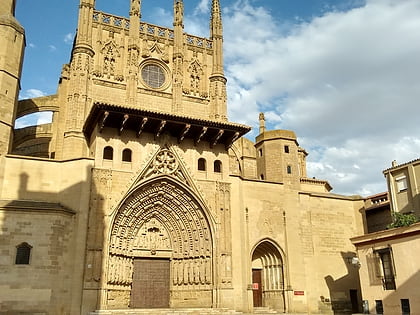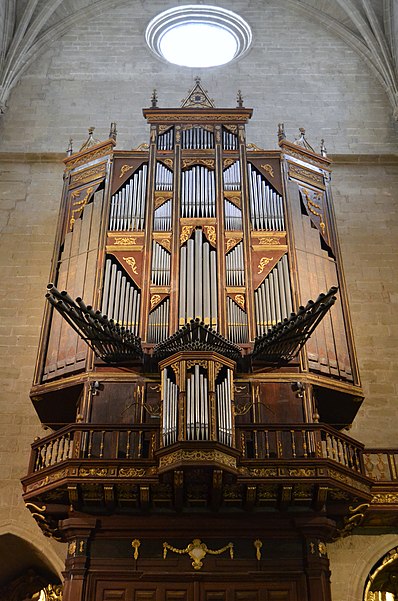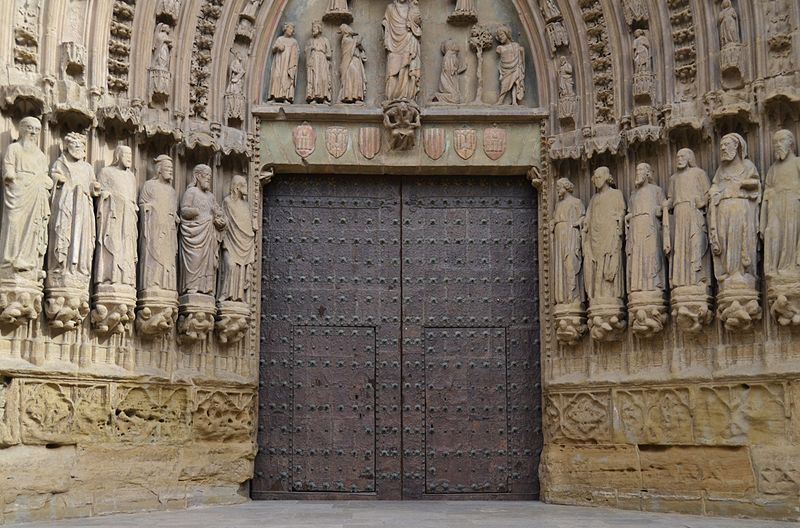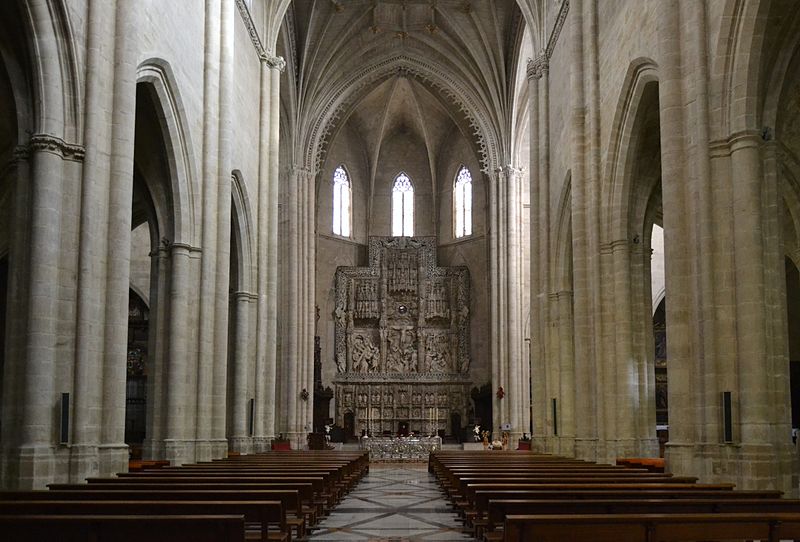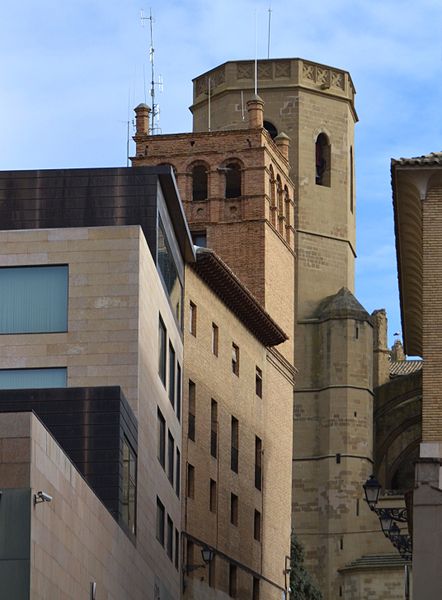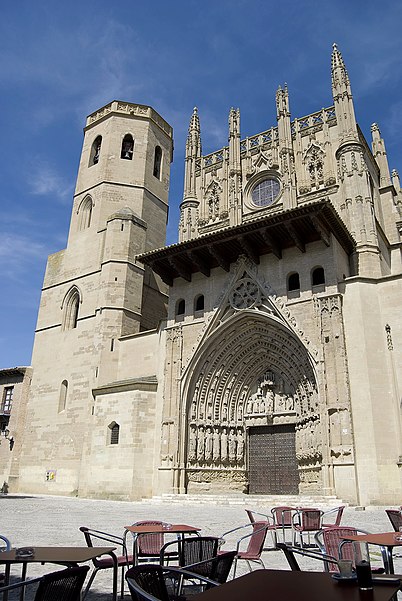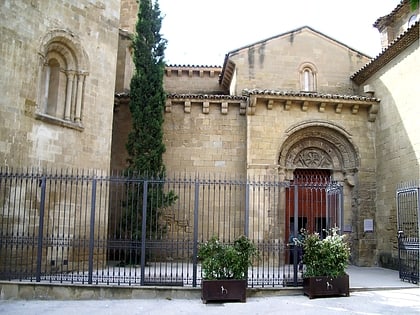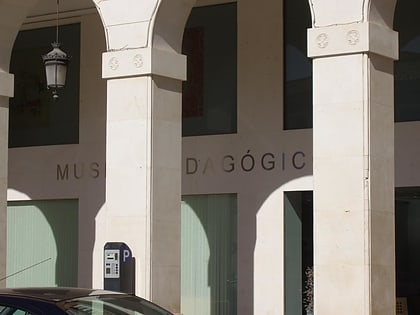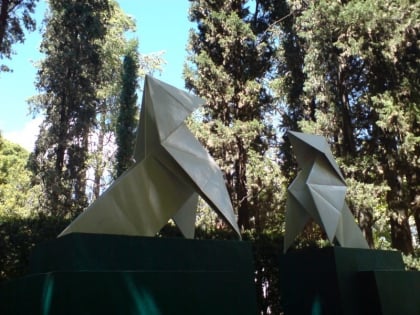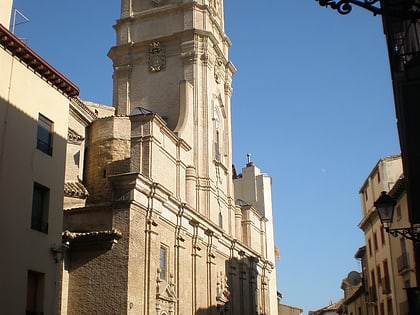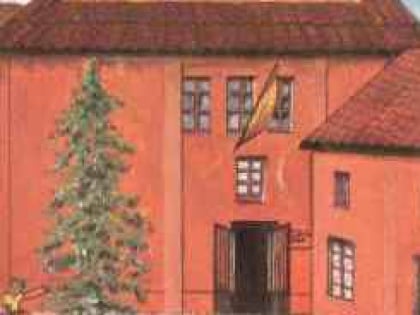Huesca Cathedral, Huesca
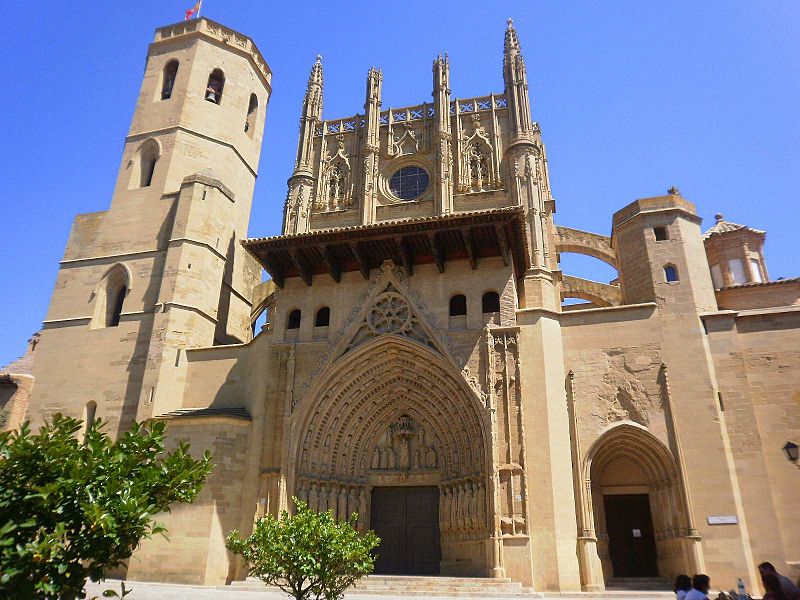
Facts and practical information
The Huesca Cathedral, officially known as the Cathedral of Saint Mary of Huesca, stands as a magnificent testament to Gothic architecture in the city of Huesca, Spain. This grand religious edifice, nestled in the region of Aragon, is not only a place of worship but also a beacon of cultural and historical significance.
Constructed on the site of a former Romanesque church, the cathedral's cornerstone was laid in the late 13th century, and the building was consecrated in 1273. However, the majority of the work took place between the 14th and 16th centuries, which is reflected in the Gothic style that predominates throughout the structure.
Visitors to the Huesca Cathedral are greeted by its striking façade, which features a beautiful Gothic doorway flanked by two robust towers. The doorway itself is adorned with intricately carved figures that depict various religious scenes, offering a glimpse into the artistry of the period.
The cathedral's interior is equally impressive, with its lofty nave creating a sense of grandeur and reverence. The ribbed vaults and stained glass windows cast colorful patterns of light across the stone floors, enhancing the sacred atmosphere. One of the cathedral's most notable features is the exquisite altarpiece, a masterpiece of Gothic woodcarving that portrays the life of the Virgin Mary and Jesus Christ.
The cathedral is also home to a valuable collection of religious art and artifacts, including paintings, sculptures, and tapestries, which are of great interest to those keen on ecclesiastical art and history.
Huesca Cathedral – popular in the area (distance from the attraction)
Nearby attractions include: Abbey of San Pedro el Viejo, Museo Pedagógico de Aragón, Parque Miguel Servet, Basílica Real y Parroquial de San Lorenzo.
